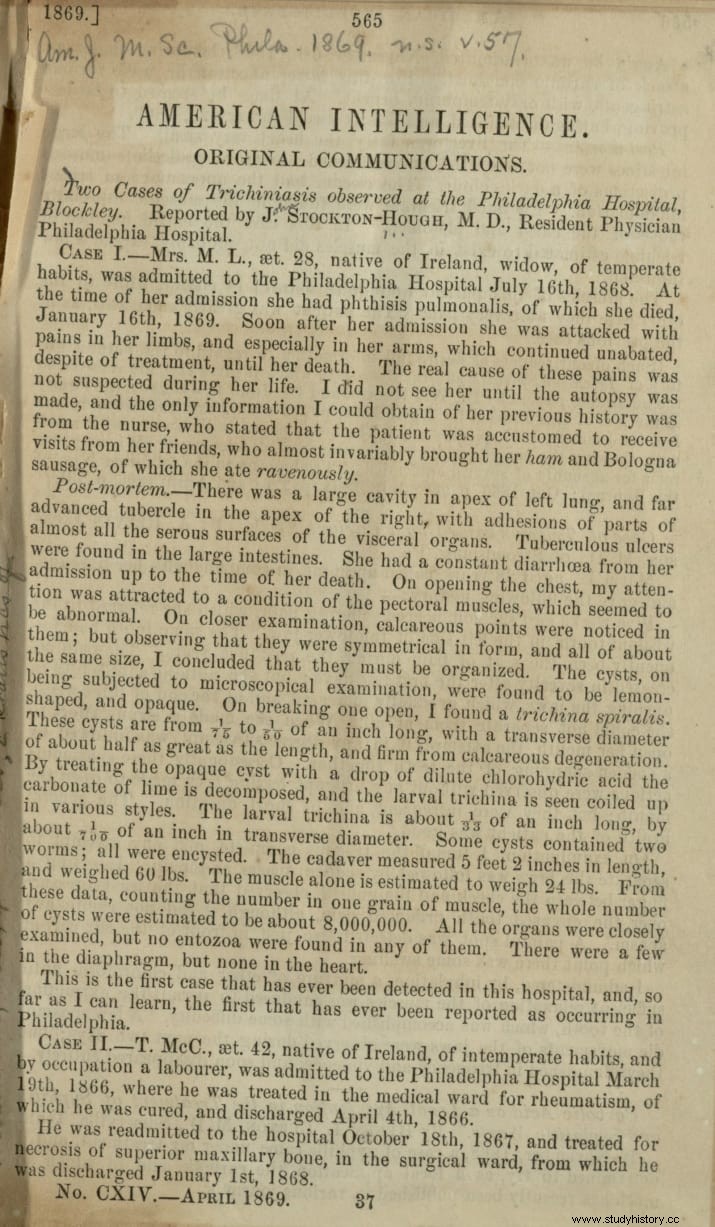Although it is known that it was done long before, binding books with human skin, a practice known as anthropodermic bibliopegy , had its most prolific period during the 19th century. There are numerous examples of books bound with this technique that have come down to us, most of these are in libraries, museums and private collections, but the case of the Irish Mary Lynch is somewhat particular: the skin of her legs was used to bind three books .

According to the autopsy of Mary Lynch, published by the doctor John Stockton Hough her, she was hospitalized in 1869 for tuberculosis, but her death had nothing to do with this disease. Since the food that she was given in the hospital was not the most adequate, both because of its quantity and also because of its quality, her family regularly brought her food, especially pork sausages. Unfortunately, that meat was infected with Trichinella spiralis , the parasite that causes trichinellosis or trichinosis. Disease that caused his death in just six months at the age of 28.

Autopsy report
I suppose that relying on the Anatomy Act (1832) that allowed relatives to donate bodies to medical schools or faculties to "research/practice" with them in exchange for them assuming burial expenses, the young John Stockton Hough took care of the body before burying the remains in the common grave of the hospital. But Mary's body was going to be used for other purposes. Before she was buried, Dr. Hough pulled a scalpel and peeled the skin off her thighs. For months she worked on her in the hospital basement, hiding from prying eyes, until she had tanned her skin - probably with urine. Nothing was heard of Mary's skin again, until almost 20 years later, specifically in 1887, when the doctor used it to bind three books:Speculations on the Mode and Appearances of Impregnation in the Human Female , Le Nouvelles Decouvertes sur Toutes les Parties Principales de L’Homme et de la Femme and Recueil des Secrets de Louyse Bourgeois (originally published in 1789, 1680 and 1650 respectively); three medical treatises on childbirth, conception, and women's health in general.
Why she did it is a mystery, but it seems that the doctors who used this technique did it in memory of her patients -remember that he was the one who discovered the cause of her death when she did the autopsy-. So, we can speculate that that was the reason. Furthermore, the choice of those tracts may well have been because John Hough's first wife died in childbirth six years after Mary. Today the books are in the Mütter Museum (Philadelphia, USA), where the strangest collections related to anatomy and medicine are gathered. Each of the books has a handwritten doctor's note stating that the leather they are bound in is from Mary Lynch's thighs.

Sources:The legacy of Mary Lynch, Buzzfeed
